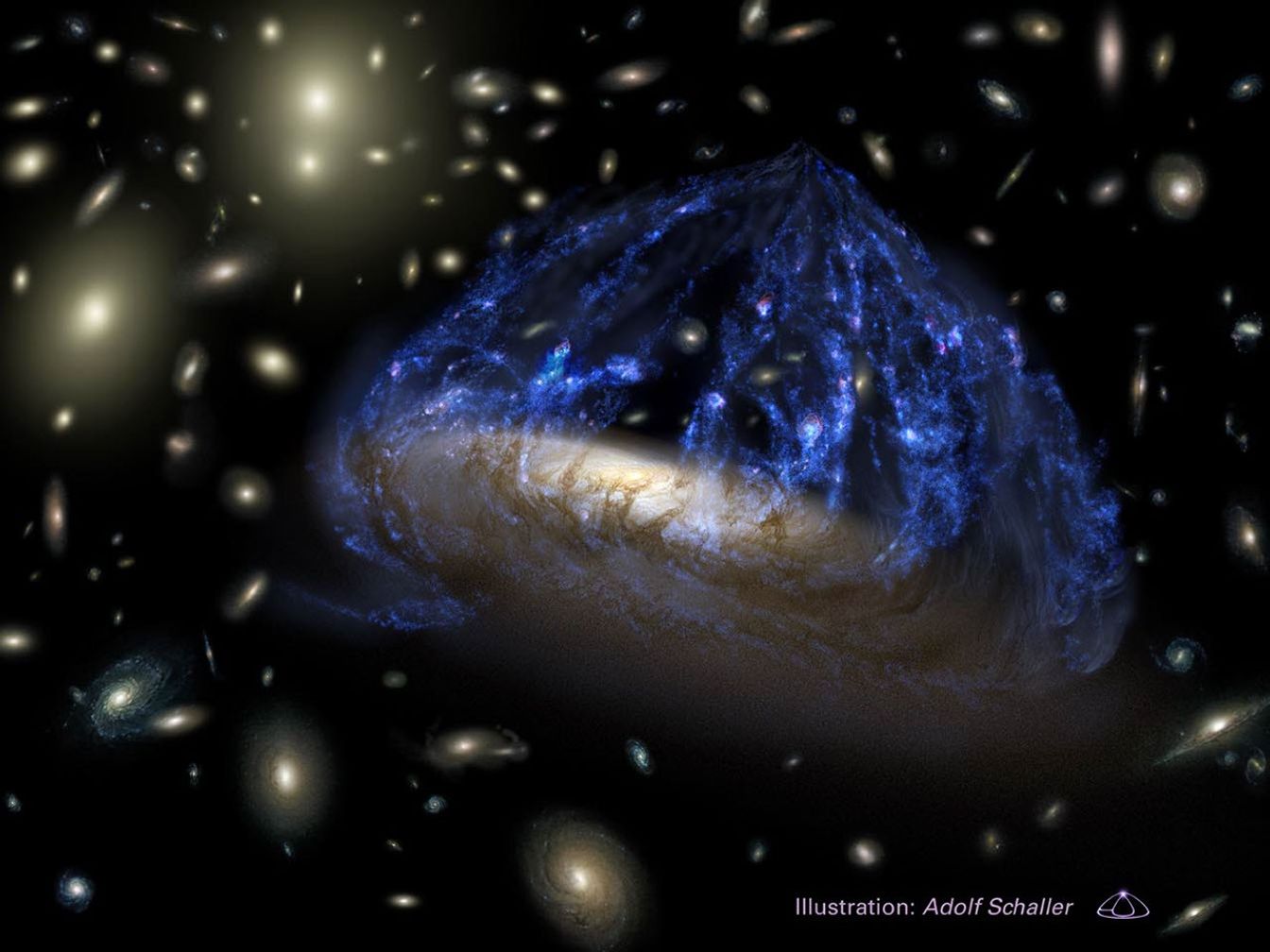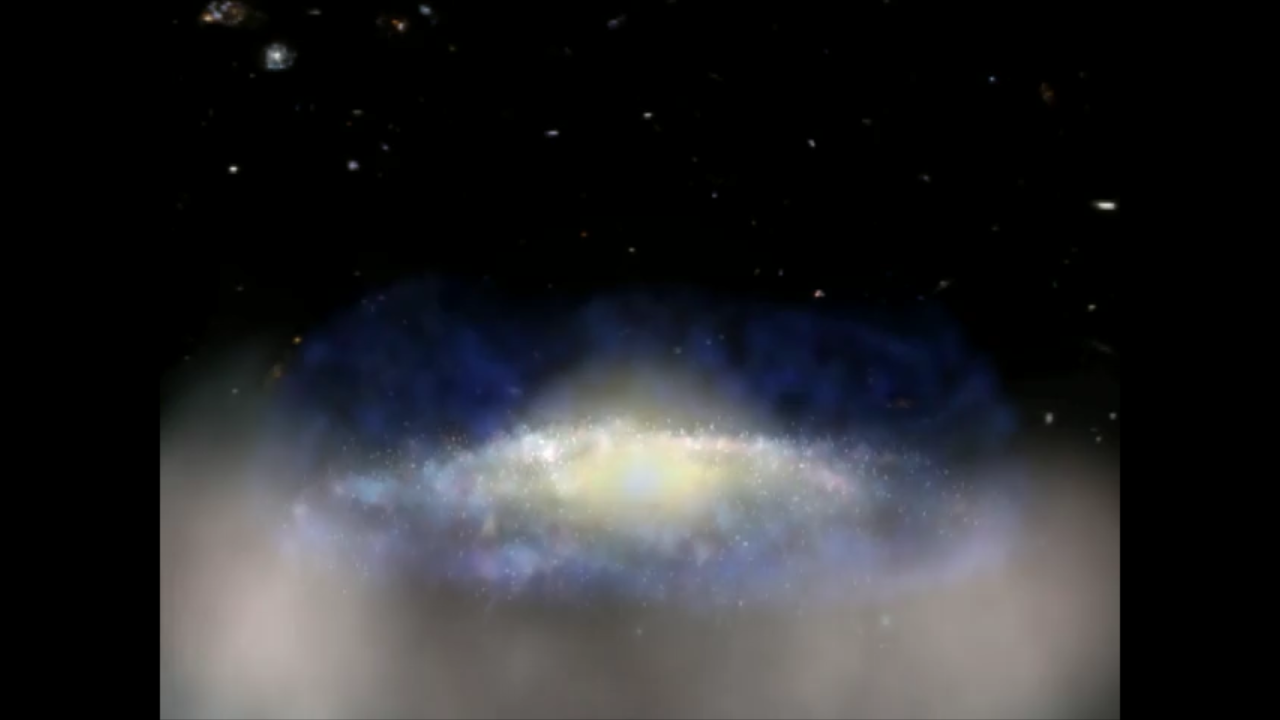1 min read
Galaxy C153 in Cluster Abell 2125 in X-ray (Chandra)

About the Object
- R.A. PositionR.A. PositionRight ascension – analogous to longitude – is one component of an object's position.15h 41m 9.76s
- Dec. PositionDec. PositionDeclination – analogous to latitude – is one component of an object's position.66° 15' 45.0"
- ConstellationConstellationOne of 88 recognized regions of the celestial sphere in which the object appears.Ursa Major
- DistanceDistanceThe physical distance from Earth to the astronomical object. Distances within our solar system are usually measured in Astronomical Units (AU). Distances between stars are usually measured in light-years. Interstellar distances can also be measured in parsecs.3 billion light-years (920 million parsecs)
- DimensionsDimensionsThe physical size of the object or the apparent angle it subtends on the sky.This image is 34 arcseconds (500,000 light-years or 150,000 parsecs) wide.
About the Data
- Data DescriptionData DescriptionProposal: A description of the observations, their scientific justification, and the links to the data available in the science archive.
Science Team: The astronomers who planned the observations and analyzed the data. "PI" refers to the Principal Investigator.Chandra Data: [02800347] Q. Daniel Wang (U Mass.) - InstrumentInstrumentThe science instrument used to produce the data.CXO>ACIS-I
- Exposure DatesExposure DatesThe date(s) that the telescope made its observations and the total exposure time.August 2001, Exposure Time: 22 hours
- FiltersFiltersThe camera filters that were used in the science observations.0.5-2 keV
- Object NameObject NameA name or catalog number that astronomers use to identify an astronomical object.C153
- Object DescriptionObject DescriptionThe type of astronomical object.Galaxy C153 in Cluster Abell 2125
- Release DateJanuary 6, 2004
- Science ReleaseToo Fast, Too Furious: A Galaxy’s Fatal Plunge
- CreditQ. Daniel Wang (U Mass.)

Violet: X-ray (CXO)
Related Images & Videos
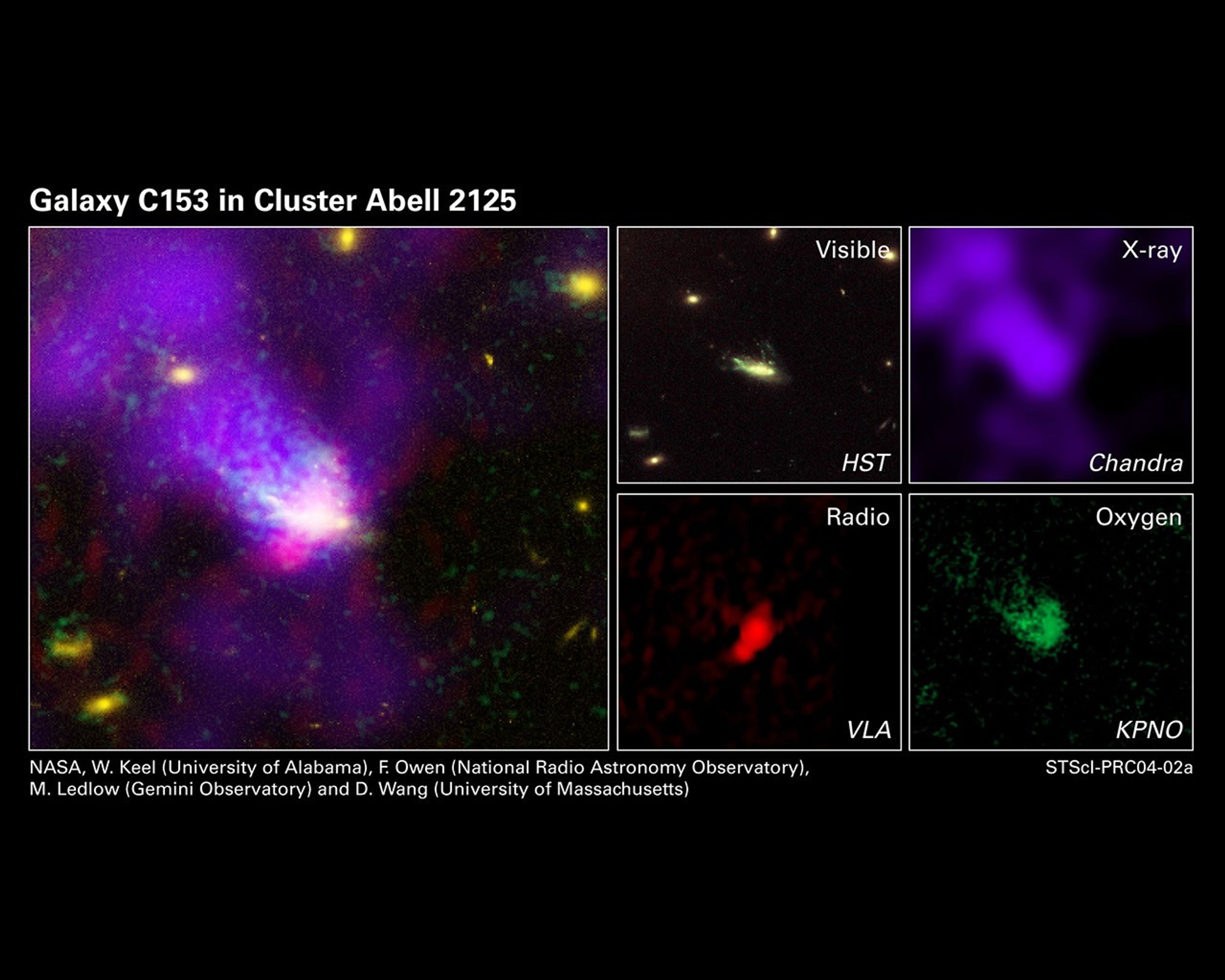
Too Fast, Too Furious: A Galaxy's Fatal Plunge
These images offer a dramatic look at a spiral galaxy like our Milky Way being ripped apart as it races at 4.5 million miles per hour through the heart of a distant cluster of galaxies. The images, taken over several wavelengths, provide evidence of the "galactic assault and...
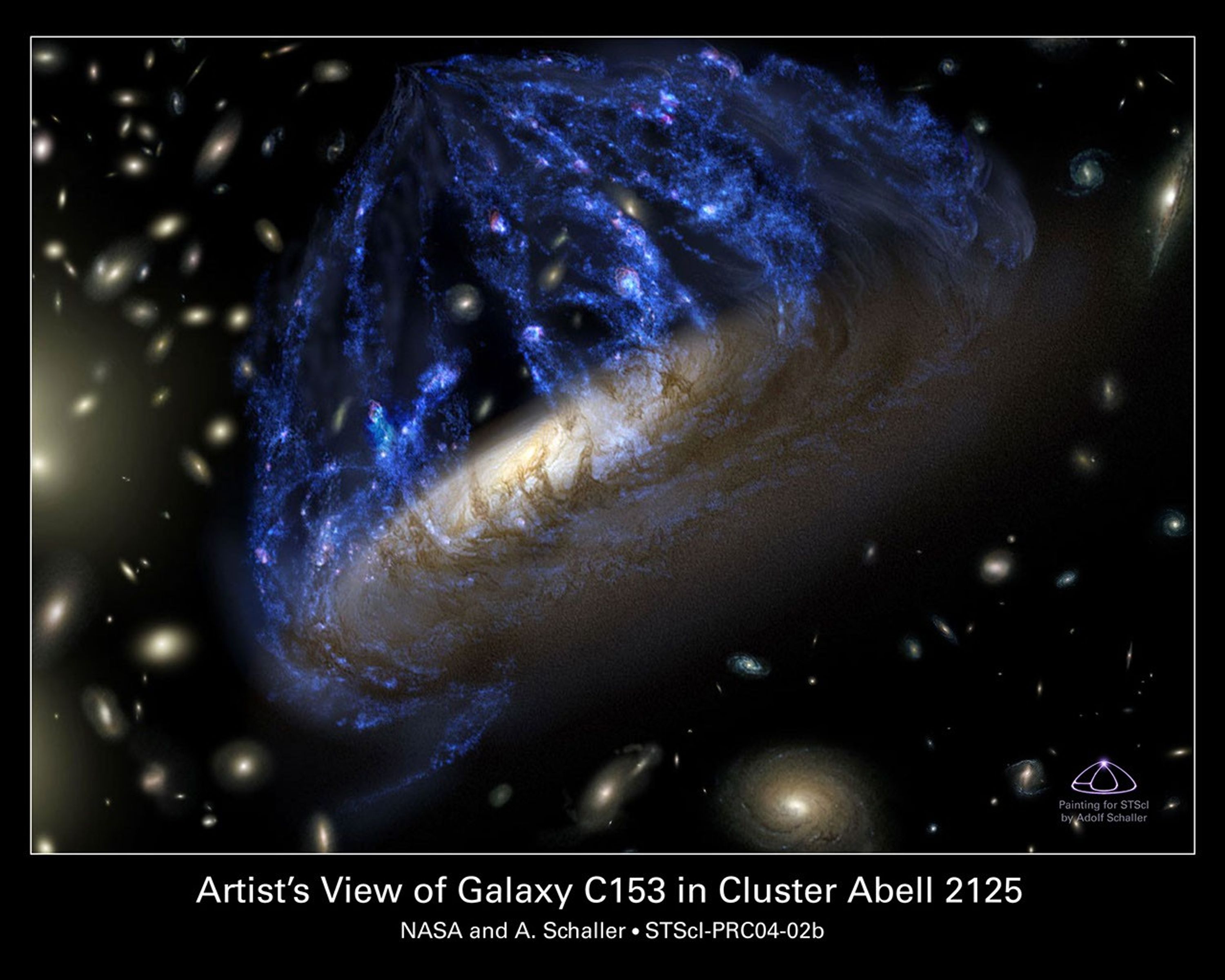
A Disintegrating Galaxy Plows Through Space
This is an artist's conception of the spiral galaxy C153. The galaxy looks peculiar because it is plowing through the heart of a distant galaxy cluster at 4.5 million miles per hour. Gas compressed along the galaxy's leading edge, like snow before a plow, ignited a firestorm of...
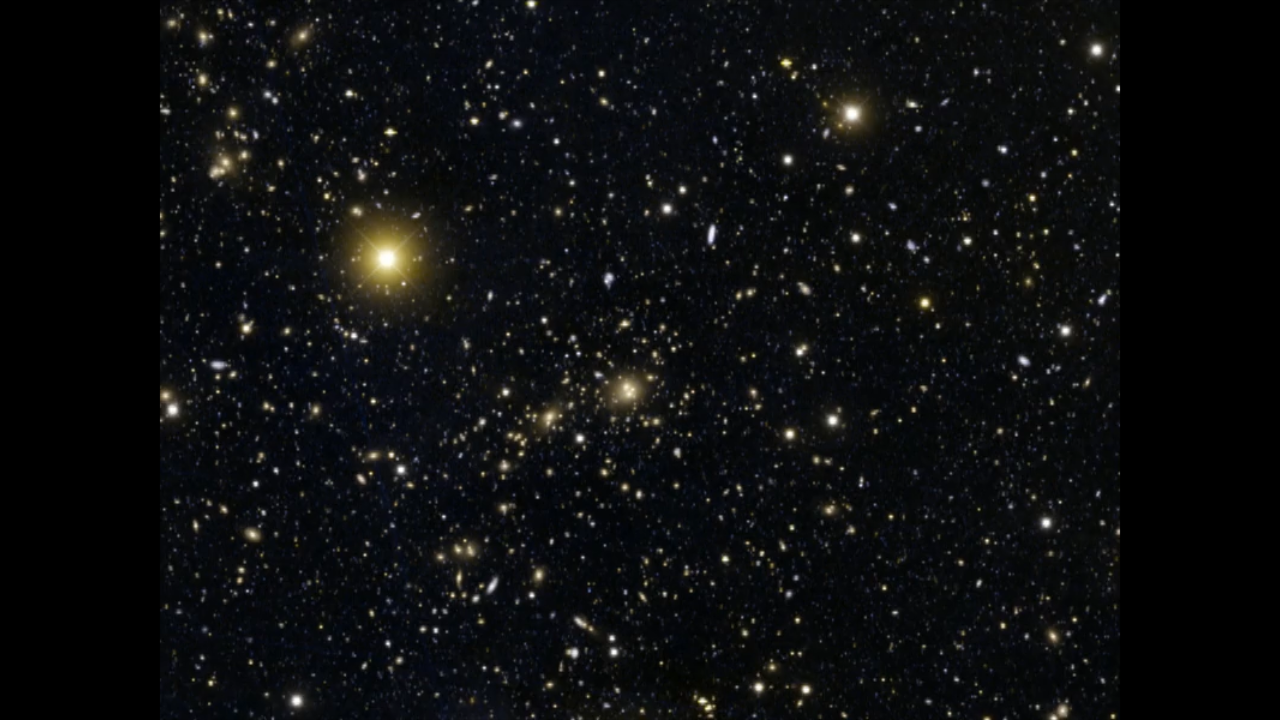
Zoom into the Spiral Galaxy C153
A Zoom into the C153 spiral galaxy found in the galaxy cluster Abell 2125. The initial view moves from the NOAO telescope mosaic into the Hubble Wide Field Planetary Camera 2 image of C153. This Hubble image then dissolves into a colorful composite detail of X-ray, radio, UV and...
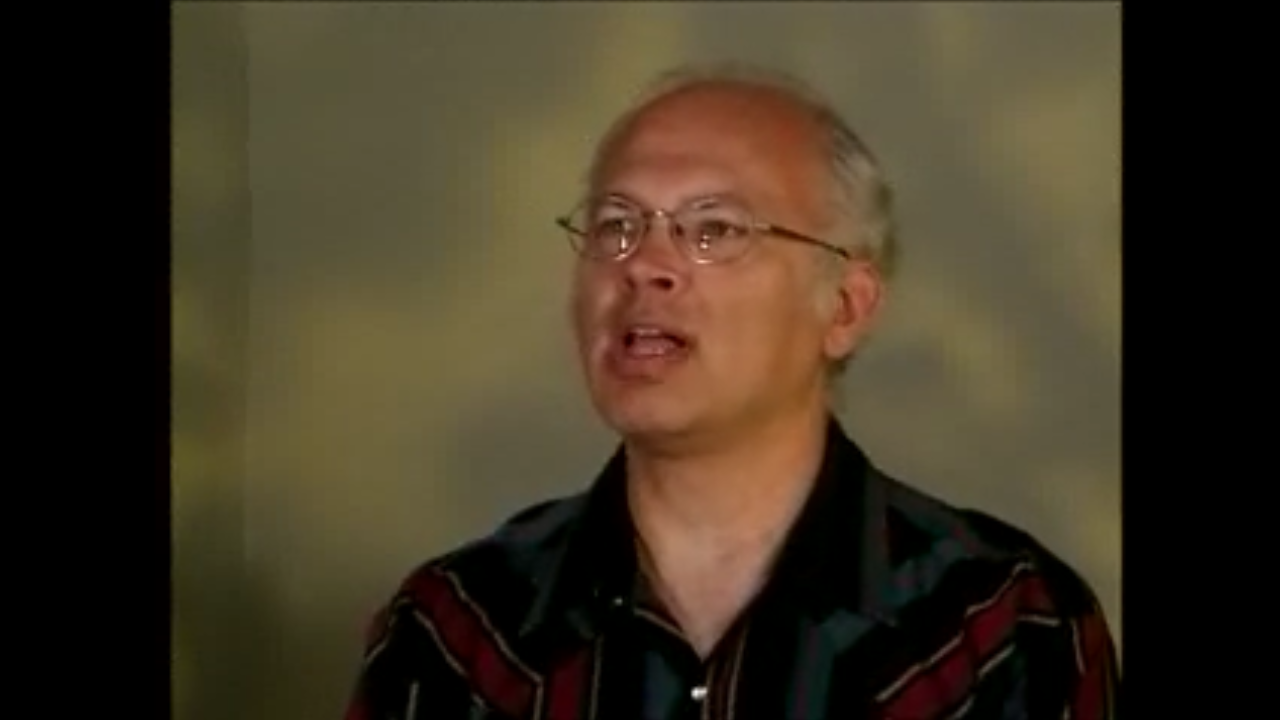
Interview with Dr. William Keel (1st of 4 clips): What's Happening in C153
First of four interview clips with Dr. William Keel, Professor of Astronomy at the University of Alabama. Topic discussions on what is happening in galaxy C153, the scientific implications, how this could pertain to us and why the different observations were used.
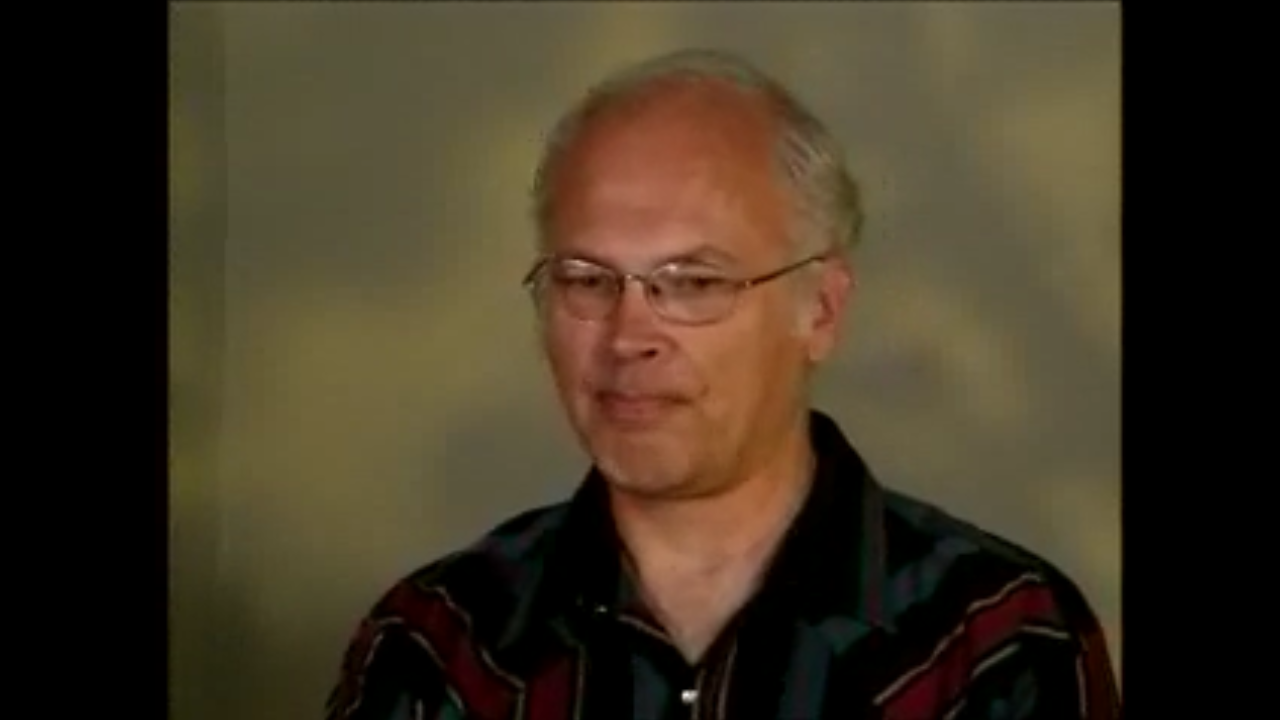
Interview with Dr. William Keel (2nd of 4 clips): Scientific Implications
Second of four interview clips with Dr. William Keel, Professor of Astronomy at the University of Alabama. Topic discussions on what is happening in galaxy C153, the scientific implications, how this could pertain to us and why the different observations were used.
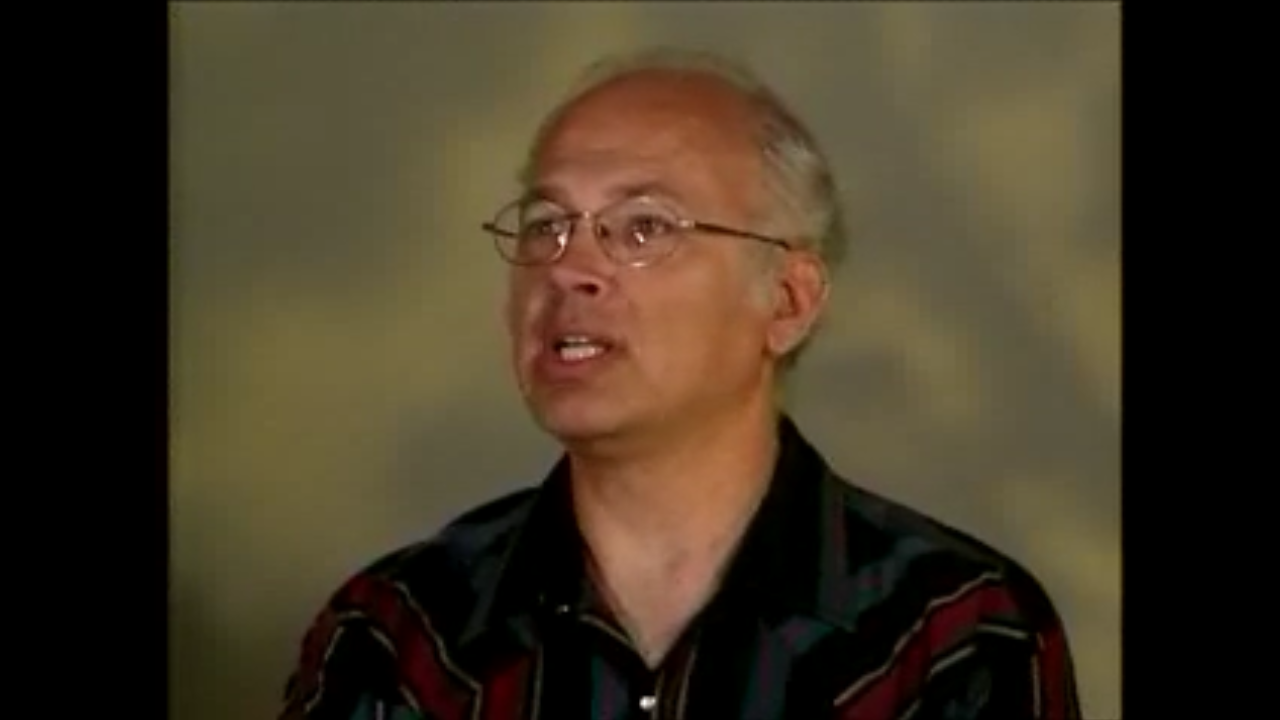
Interview with Dr. William Keel (3rd of 4 clips): Pertains to Us
Third of four interview clips with Dr. William Keel, Professor of Astronomy at the University of Alabama. Topic discussions on what is happening in galaxy C153, the scientific implications, how this could pertain to us and why the different observations were used.
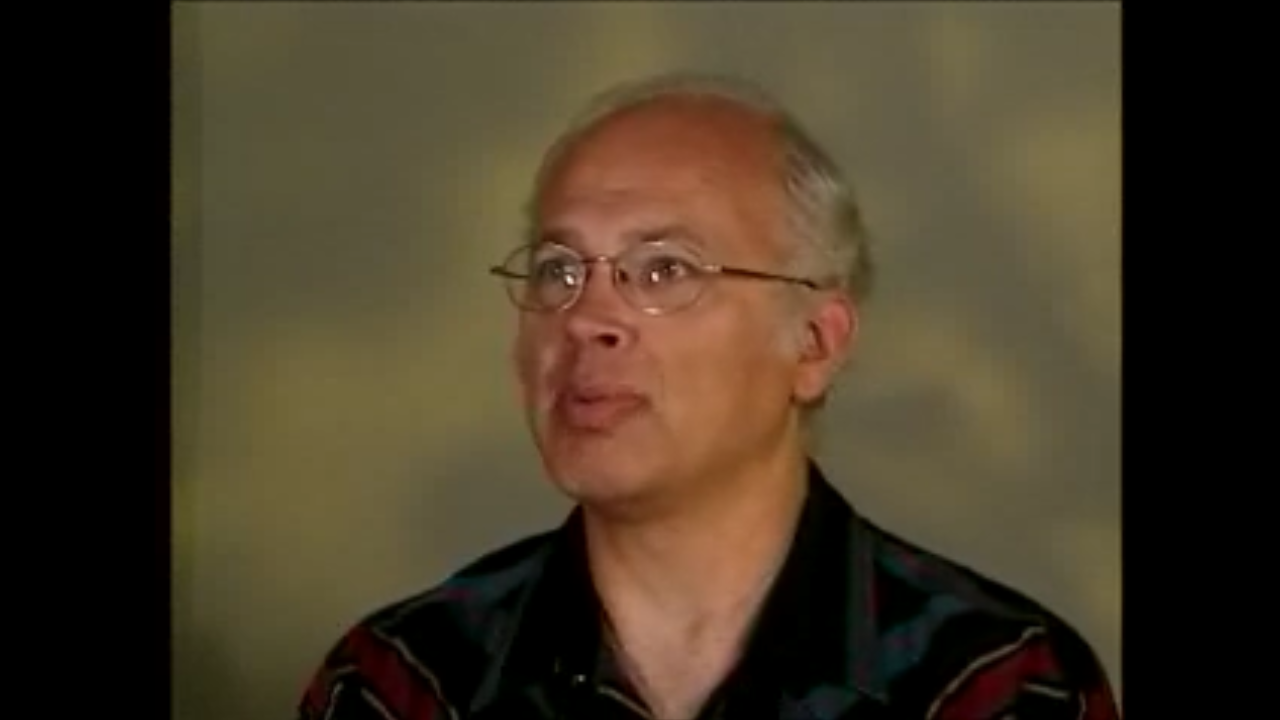
Interview with Dr. William Keel (4th of 4 clips): Different Observations
Fourth of four interview clips with Dr. William Keel, Professor of Astronomy at the University of Alabama. Topic discussions on what is happening in galaxy C153, the scientific implications, how this could pertain to us and why the different observations were used.
Share
Details
Claire Andreoli
NASA’s Goddard Space Flight Center
Greenbelt, Maryland
claire.andreoli@nasa.gov





























